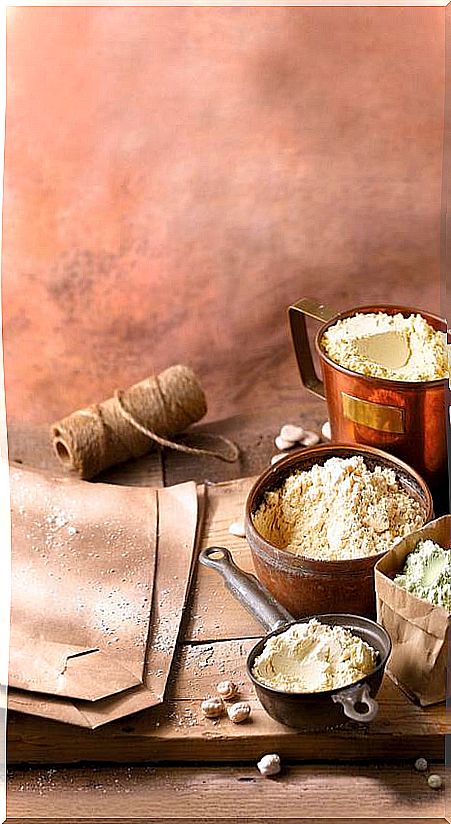10 Advantages Of Legume Flours And How To Incorporate Them Into Your Dishes
In many recipes they can substitute for cereal flours, especially if there is an intolerance to gluten, and they are ideal to add flavor and consistency

By grinding the legumes, gluten-free flours rich in proteins, minerals and fiber are obtained. We tell you its benefits and how to incorporate them into your recipes.
Benefits of legume flours
1. More assimilable
These flours are a very versatile resource if you want to benefit from the nutritional properties of chickpeas, lentils, soybeans, peas or even lupins, since when grinding them they preserve their valuable nutritional power and even improve the absorption of some nutrients.
2. A complete food
Dried legumes, and therefore their flours, are recognized as a first-rate food for their richness in protein, fiber and a healthy fat profile, which also helps reduce cholesterol. They are also a good source of minerals (such as magnesium or iron) and B vitamins.
3. Allies against being overweight
Legume flours are richer in protein (20-36%) than those of any cereal (10-13%). On the other hand, with the exception of soy flour, they hardly have fat. This not only dismantles the idea that legumes are fattening, but also enables them as a very useful ingredient when it comes to lightening recipes.
4. No glucose ups and downs
Its main component, carbohydrates, are made up of starch, which together with its fiber gives it a low glycemic index. This not only keeps glucose levels stable but also makes them good fuel for the brain.
5. Gluten free
The absence of gluten is one of its best assets, since it makes life much easier for people with celiac disease and the increasing number of people who suffer from sensitivity to this glycoprotein.
6. Very versatile
Ground legumes offer a delicious way to enrich dishes. Not only do they provide their nutrients and their delicate flavor, but most also have binding, thickening or emulsifying properties that are very useful in cooking. The food industry takes advantage of them to obtain pastes with a firmer texture, stabilize emulsions or increase the volume of some breakfast cereals or snack products.
7. Fluffy texture
One of the most versatile is chickpea flour (also called “besan”). With it you can make a magnificent Spanish omelette without using a single egg: it gives it texture and a slightly yellow color. You can also make the seitan much fluffier by adding it to the gluten.
8. Healthy batters
Chickpea flour can be used to coat. In India, for example, batters called pakoras are often prepared .
9. Croquettes and burguers
Legume flours are useful for linking croquettes, meatballs or vegetable burgers. Pea, for example, gives them an unbeatable color and flavor.
10. Give body to sauces and broths
As they contain starch, these flours are excellent as thickeners and a healthy alternative if you need to give body to a sauce, a broth or any other recipe in which corn or wheat is usually used.









